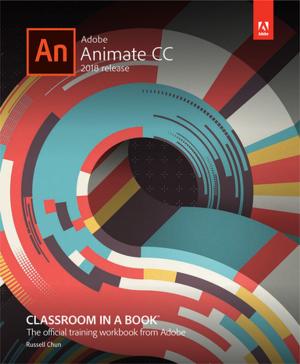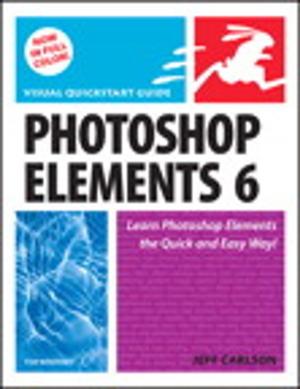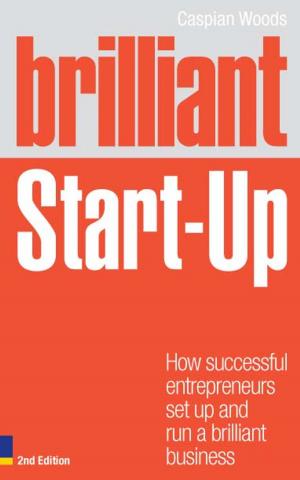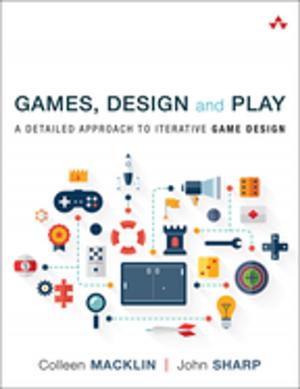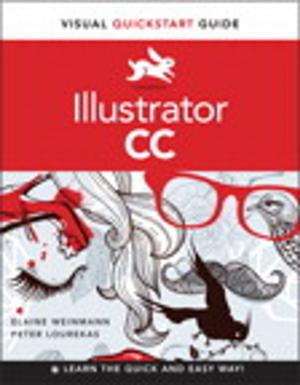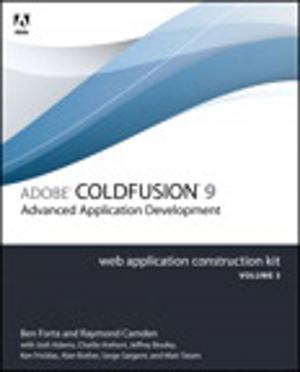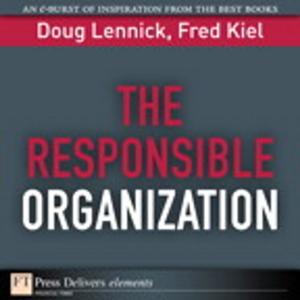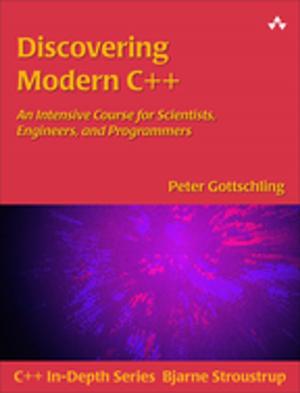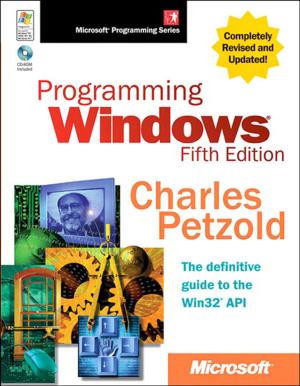| Author: | Harvey Deitel, Paul Deitel | ISBN: | 9780134021560 |
| Publisher: | Pearson Education | Publication: | January 16, 2015 |
| Imprint: | Prentice Hall | Language: | English |
| Author: | Harvey Deitel, Paul Deitel |
| ISBN: | 9780134021560 |
| Publisher: | Pearson Education |
| Publication: | January 16, 2015 |
| Imprint: | Prentice Hall |
| Language: | English |
The professional programmer’s Deitel® guide to Apple’s new Swift programming language for the iOS® and OS X® platforms
¿
Written for programmers with a background in object-oriented programming in a C-based language like Objective-C, Java, C# or C++, this book applies the Deitel signature live-code approach with scores of complete, working, real-world programs to explore the new Swift language in depth. The code examples feature syntax shading, code highlighting, rich commenting, line-by-line code walkthroughs and live program outputs. The book features thousands of lines of proven Swift code, and tips that will help you build robust applications.
¿
Start with an introduction to Swift using an early classes and objects approach, then rapidly move on to more advanced topics. When you master the material, you’ll be ready to build industrial-strength object-oriented Swift applications.
About This Book
¿
The Swift™ programming language was arguably the most significant announcement at Apple’s 2014 Worldwide Developers Conference. Although apps can still be developed in Objective-C®, Apple says that Swift is its applications programming and systems programming language of the future.
¿
Swift is a contemporary language with simpler syntax than Objective-C. Because Swift is new, its designers were able to include popular programming language features from languages such as Objective-C, Java™, C#, Ruby, Python® and many others. These features include automatic reference counting (ARC), type inference, optionals, String interpolation, tuples, closures (lambdas), extensions, generics, operator overloading, functions with multiple return values, switch statement enhancements and more. We’ve been able to develop apps more quickly in Swift than with Objective-C and the code is shorter, clearer and runs faster on today’s multi-core architectures.
¿
Swift also eliminates the possibility of many errors common in other languages, making your code more robust and secure. Some of these error-prevention features include no implicit conversions, ARC, no pointers, required braces around every control statement’s body, assignment operators that do not return values, requiring initialization of all variables and constants before they’re used, array bounds checking, automatic checking for overflow of integer calculations, and more. You can combine Swift and Objective-C in the same app to enhance existing Objective-C apps without having to rewrite all the code. Your apps will easily be able to interact with the Cocoa®/Cocoa Touch® frameworks, which are largely written in Objective-C.
¿
You can also use the new Xcode playgrounds with Swift. A playground is an Xcode window in which you can enter Swift code that compiles and executes as you type it. This allows you to see and hear your code’s results as you write it, quickly find and fix errors, and conveniently experiment with features of Swift and the Cocoa/Cocoa Touch frameworks.
¿
Practical, Example-Rich Coverage of:
- Classes, Objects, Methods, Properties
- Initializers, Deinitializers, Bridging
- Tuples, Array and Dictionary Collections
- Structures, Enumerations, Closures, ARC
- Inheritance, Polymorphism, Protocols
- Type Methods, Type Properties
- Generics; Strings and Characters
- Operator Overloading, Operator Functions, Custom Operators, Subscripts
- Access Control; Type Casting and Checking
- Nested Types, Nested Methods
- Optionals, Optional Chaining, Extensions
- Xcode, Playgrounds, Intro to Cocoa Touch® with a Fully Coded iOS® 8 Tip Calculator App
- Overflow Operators, Attributes, Patterns
- More topics online
¿
IMPORTANT NOTE ABOUT XCODE AND SWIFT: With Xcode 6.3 and Swift 1.2, Apple introduced several changes in Swift that affect the book's source code. Please visit www.deitel.com/books/iOS8FP1 for updated source code. The changes do not affect Xcode 6.2 users. You can download Xcode 6.2 from developer.apple.com/downloads/index.action (you’ll have to log in with your Apple developer account to see the list of downloads). ¿Visit www.deitel.com
- Download code examples
- For information on Deitel’s Dive Into® Series programming training courses delivered at organizations worldwide visit www.deitel.com/training or to deitel@deitel.com
- Join the Deitel social networking communities on Facebook® at facebook.com/DeitelFan, Twitter® at @deitel, Google+™ at google.com/+DeitelFan, LinkedIn® at bit.ly/DeitelLinkedIn, YouTube™ at youtube.com/user/DeitelTV and subscribe to the Deitel® Buzz Online e-mail newsletter at www.deitel.com/newsletter/ subscribe.html
¿
The professional programmer’s Deitel® guide to Apple’s new Swift programming language for the iOS® and OS X® platforms
¿
Written for programmers with a background in object-oriented programming in a C-based language like Objective-C, Java, C# or C++, this book applies the Deitel signature live-code approach with scores of complete, working, real-world programs to explore the new Swift language in depth. The code examples feature syntax shading, code highlighting, rich commenting, line-by-line code walkthroughs and live program outputs. The book features thousands of lines of proven Swift code, and tips that will help you build robust applications.
¿
Start with an introduction to Swift using an early classes and objects approach, then rapidly move on to more advanced topics. When you master the material, you’ll be ready to build industrial-strength object-oriented Swift applications.
About This Book
¿
The Swift™ programming language was arguably the most significant announcement at Apple’s 2014 Worldwide Developers Conference. Although apps can still be developed in Objective-C®, Apple says that Swift is its applications programming and systems programming language of the future.
¿
Swift is a contemporary language with simpler syntax than Objective-C. Because Swift is new, its designers were able to include popular programming language features from languages such as Objective-C, Java™, C#, Ruby, Python® and many others. These features include automatic reference counting (ARC), type inference, optionals, String interpolation, tuples, closures (lambdas), extensions, generics, operator overloading, functions with multiple return values, switch statement enhancements and more. We’ve been able to develop apps more quickly in Swift than with Objective-C and the code is shorter, clearer and runs faster on today’s multi-core architectures.
¿
Swift also eliminates the possibility of many errors common in other languages, making your code more robust and secure. Some of these error-prevention features include no implicit conversions, ARC, no pointers, required braces around every control statement’s body, assignment operators that do not return values, requiring initialization of all variables and constants before they’re used, array bounds checking, automatic checking for overflow of integer calculations, and more. You can combine Swift and Objective-C in the same app to enhance existing Objective-C apps without having to rewrite all the code. Your apps will easily be able to interact with the Cocoa®/Cocoa Touch® frameworks, which are largely written in Objective-C.
¿
You can also use the new Xcode playgrounds with Swift. A playground is an Xcode window in which you can enter Swift code that compiles and executes as you type it. This allows you to see and hear your code’s results as you write it, quickly find and fix errors, and conveniently experiment with features of Swift and the Cocoa/Cocoa Touch frameworks.
¿
Practical, Example-Rich Coverage of:
- Classes, Objects, Methods, Properties
- Initializers, Deinitializers, Bridging
- Tuples, Array and Dictionary Collections
- Structures, Enumerations, Closures, ARC
- Inheritance, Polymorphism, Protocols
- Type Methods, Type Properties
- Generics; Strings and Characters
- Operator Overloading, Operator Functions, Custom Operators, Subscripts
- Access Control; Type Casting and Checking
- Nested Types, Nested Methods
- Optionals, Optional Chaining, Extensions
- Xcode, Playgrounds, Intro to Cocoa Touch® with a Fully Coded iOS® 8 Tip Calculator App
- Overflow Operators, Attributes, Patterns
- More topics online
¿
IMPORTANT NOTE ABOUT XCODE AND SWIFT: With Xcode 6.3 and Swift 1.2, Apple introduced several changes in Swift that affect the book's source code. Please visit www.deitel.com/books/iOS8FP1 for updated source code. The changes do not affect Xcode 6.2 users. You can download Xcode 6.2 from developer.apple.com/downloads/index.action (you’ll have to log in with your Apple developer account to see the list of downloads). ¿Visit www.deitel.com
- Download code examples
- For information on Deitel’s Dive Into® Series programming training courses delivered at organizations worldwide visit www.deitel.com/training or to deitel@deitel.com
- Join the Deitel social networking communities on Facebook® at facebook.com/DeitelFan, Twitter® at @deitel, Google+™ at google.com/+DeitelFan, LinkedIn® at bit.ly/DeitelLinkedIn, YouTube™ at youtube.com/user/DeitelTV and subscribe to the Deitel® Buzz Online e-mail newsletter at www.deitel.com/newsletter/ subscribe.html
¿

